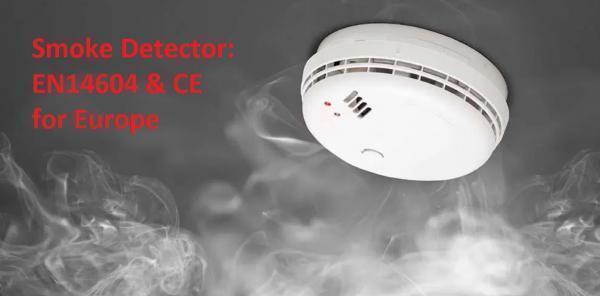What is EN14604 Standard for Wireless Smoke Detector

Smoke Detectors for residential protection in European Union have the mandatory requirement of meeting EN14604 standard. After third party testing approval for CE certificate, the device then can be installed for fire safety purposes. Below we list the 6 main requirements it must meet:
Battery removal indication – Users should be able to be notified when the smoke device is installed without a battery present.
Marking and data – Specific information must be displayed on the product itself. This includes recommendation of date for replacement of device, battery type & testing.
Directional dependence – This is a requirement for the smoke alarm’s sensitivity to be the same in all directions. In other words, the dependence of direction of smoke detection should be limited.
Initial sensitivity – This dictates that the production should be calibrated to the same sensitivity.
Fire sensitivity – The fire should trigger the alarm of the device before a set limit. 4 different fires are considered in this test:
- Pyrolysis wood fire TF2
- Glowing smouldering cotton fire TF3
- Flaming plastics (polyurethane) fire TF4
- Flaming liquid (n-heptane) fire TF5
Sound Output - When the alarm is triggered, the sound decibel should be within a certain permissible range with an accepted frequency.
It is estimated that roughly 30% of products on the European market has at least one requirement listed above which do not meet compliance. This may be due to the fact that it was produced prior to the new standard, or it was sold on the market illegally.
For reliable smoke detector solution or OEM/ODM projects, please contact us for more information.





